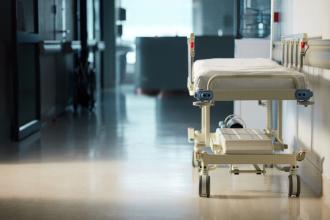COVID 20/20
4 May 2020
As I craft this editorial in early May, my heartfelt congratulations go out to the people of BC as their sacrifices have flattened the curve of this COVID-19 pandemic. By suffering through financial and social hardship, our province did not experience thousands of ill patients with significant mortality as did so many other places in the world.
I fear the next stage of the pandemic might be the most challenging. So many choices need to be made on how to proceed in reopening businesses, schools, gatherings, etc.
The president of the United States has just suggested ingesting disinfectants and using light therapy. He has blamed China for the pandemic and suggested SARS-CoV-2 leaked from a Wuhan laboratory. He has praised armed protestors rallying against federal safety guidelines for reopening economies while at the same time criticizing governors of other states for not minding these same rules. He has just announced Operation Warp Speed to fast-track a vaccine without any real knowledge of what that entails. He is the gift that keeps on giving.
Despite the death rate in the US ticking along at 2000 per day, many states are reopening their economies. Georgia has recently given the green light to gyms, hair salons, barbershops, and tattoo parlors. I can understand the need to exercise and deal with quarantine shagginess, but why is getting a tattoo a priority? I realize many people are impatient to get back to normal, whatever that will look like, but I would suggest a more careful approach.
I trust that our provincial authorities will proceed with caution using the best information available at each decision point. However, this remains extremely tricky. If opening too soon results in a second wave of cases, harsh judgment will follow. Dragging the process along with no adverse outcomes will likely be equally condemned.
In the months and years to come, retrospection will show if the approach taken to managing the pandemic in our province was the correct one. Was our initial approach of limiting testing to certain populations the correct path, or should we have mirrored South Korea’s massive testing protocol? Were physical distancing and mass closures in our best interest, or should we have followed Sweden’s model, which kept businesses open and isolated only the vulnerable in their population? Will areas that reopen quickly end up in a better place in a few months, or will they be mired in a second wave while our steady plodding saves lives? I for one am glad that I do not have to guide the course of our recovery.
By the time this editorial is published this summer, the path of this dangerous virus will likely be clearer. It will be easy to point our collective finger and judge those burdened with this thankless responsibility, but I for one will not be casting any stones. Instead, I would ask for understanding of the difficult decisions made and compassion for those forced to make them along the way.
—David R. Richardson, MD

